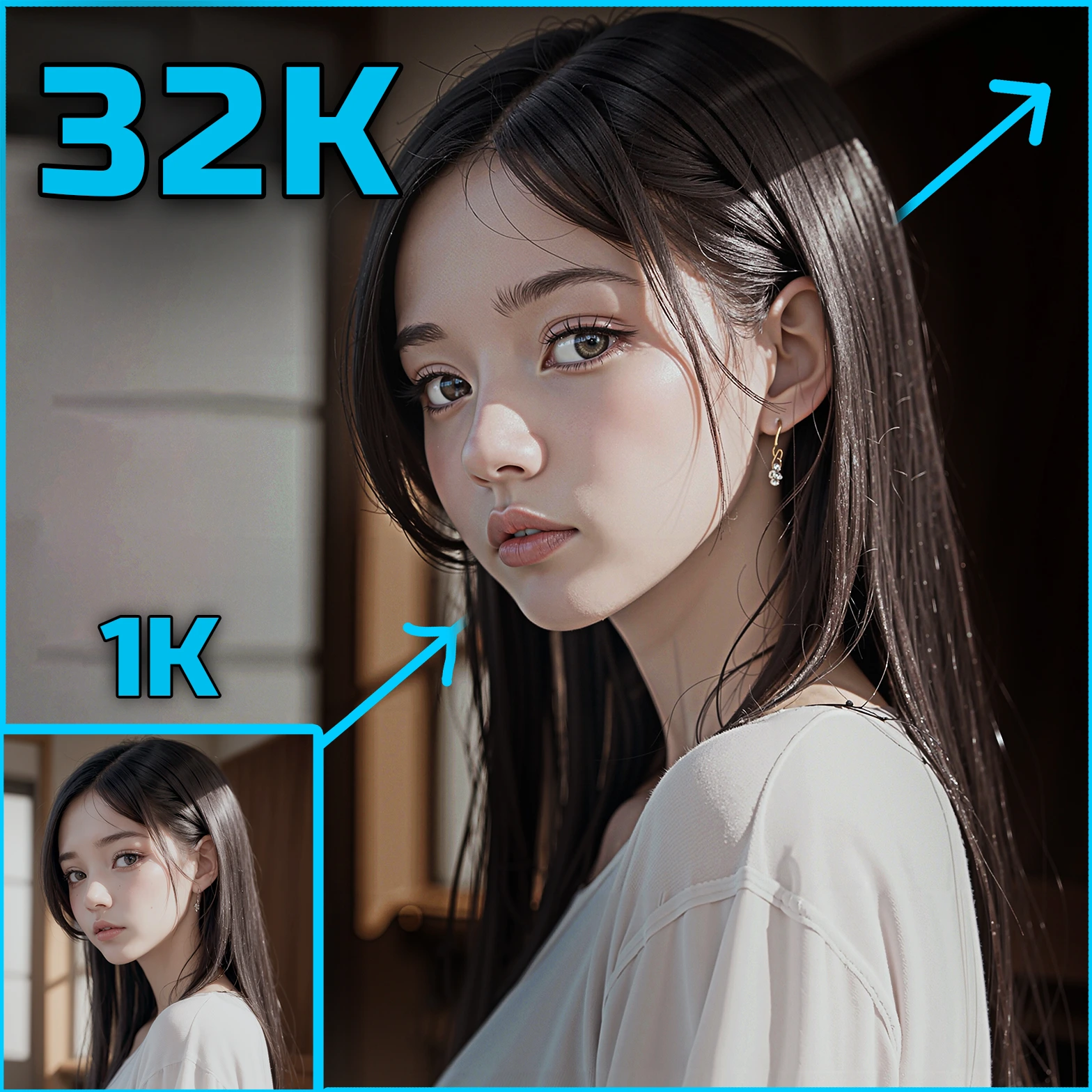ComfyUI Node: InstantID Pose Prepare Pipe (JPS)
InstantID Pose Prepare Pipe (JPS)
CategoryJPS Nodes/Pipes
JPS (Account age: 600days) Extension
JPS Custom Nodes for ComfyUI Latest Updated
2024-05-22 Github Stars
0.07K
How to Install JPS Custom Nodes for ComfyUI
Install this extension via the ComfyUI Manager by searching for JPS Custom Nodes for ComfyUI- 1. Click the Manager button in the main menu
- 2. Select Custom Nodes Manager button
- 3. Enter JPS Custom Nodes for ComfyUI in the search bar
Visit ComfyUI Online for ready-to-use ComfyUI environment
- Free trial available
- 16GB VRAM to 80GB VRAM GPU machines
- 400+ preloaded models/nodes
- Freedom to upload custom models/nodes
- 200+ ready-to-run workflows
- 100% private workspace with up to 200GB storage
- Dedicated Support
InstantID Pose Prepare Pipe (JPS) Description
Streamline image preparation for pose identification tasks with automated resizing, cropping, padding, and interpolation processes.
InstantID Pose Prepare Pipe (JPS):
The InstantID Pose Prepare Pipe (JPS) is designed to streamline the preparation of images for pose identification tasks. This node is particularly useful for AI artists who need to preprocess images to ensure they are in the optimal format for pose detection algorithms. By automating the resizing, cropping, padding, and interpolation processes, this node helps you achieve consistent and high-quality results with minimal manual intervention. The node also includes options for sharpening and flipping images, providing additional flexibility in image preparation. Overall, the InstantID Pose Prepare Pipe (JPS) simplifies the workflow, allowing you to focus more on creative aspects rather than technical details.
InstantID Pose Prepare Pipe (JPS) Input Parameters:
imageprepare_settings
This parameter is a tuple that includes various settings for preparing the image. It encompasses multiple aspects such as resizing, cropping, padding, interpolation, sharpening, and flipping. Each setting within the tuple plays a crucial role in how the image is processed and prepared for pose identification. The exact configuration of these settings can significantly impact the quality and accuracy of the pose detection results.
InstantID Pose Prepare Pipe (JPS) Output Parameters:
resize_to
This output parameter specifies the dimensions to which the image should be resized. Proper resizing ensures that the image fits the required input size for pose detection algorithms, which can improve accuracy and performance.
offset_width
This parameter indicates the horizontal offset applied to the image. Adjusting the offset can help in aligning the image correctly within the frame, which is essential for accurate pose detection.
offset_height
Similar to offset_width, this parameter specifies the vertical offset applied to the image. Proper vertical alignment is crucial for ensuring that the pose detection algorithm receives a well-centered image.
crop_left
This parameter defines the number of pixels to be cropped from the left side of the image. Cropping can help in removing unwanted parts of the image, focusing the detection algorithm on the relevant area.
crop_right
This parameter specifies the number of pixels to be cropped from the right side of the image. Like crop_left, it helps in refining the area of interest for pose detection.
crop_top
This parameter indicates the number of pixels to be cropped from the top of the image. Cropping from the top can help in eliminating unnecessary parts of the image, ensuring that the focus remains on the relevant area.
crop_bottom
This parameter defines the number of pixels to be cropped from the bottom of the image. Proper cropping from the bottom can enhance the focus on the area of interest, improving pose detection accuracy.
padding_left
This parameter specifies the amount of padding to be added to the left side of the image. Padding can help in maintaining the aspect ratio and ensuring that the image fits the required dimensions.
padding_right
This parameter indicates the amount of padding to be added to the right side of the image. Proper padding ensures that the image maintains its aspect ratio and fits the required input size.
padding_top
This parameter defines the amount of padding to be added to the top of the image. Padding from the top can help in centering the image and maintaining the aspect ratio.
padding_bottom
This parameter specifies the amount of padding to be added to the bottom of the image. Proper padding from the bottom ensures that the image fits the required dimensions and maintains its aspect ratio.
interpolation
This parameter determines the interpolation method used for resizing the image. Options include "lanczos", "nearest", "bilinear", "bicubic", "area", and "nearest-exact". The choice of interpolation method can affect the quality and smoothness of the resized image.
sharpening
This parameter specifies the level of sharpening to be applied to the image. Sharpening can enhance the details and edges in the image, making it more suitable for pose detection.
flip
This parameter indicates whether the image should be flipped and along which axis. Options include "No", "X-Axis", and "Y-Axis". Flipping can help in augmenting the dataset and improving the robustness of the pose detection algorithm.
InstantID Pose Prepare Pipe (JPS) Usage Tips:
- Ensure that the resize_to parameter matches the input size requirements of your pose detection algorithm to achieve optimal results.
- Use the cropping parameters to focus on the relevant area of the image, removing any unnecessary parts that might interfere with pose detection.
- Experiment with different interpolation methods to find the one that provides the best quality for your specific use case.
- Apply sharpening to enhance the details in the image, which can improve the accuracy of the pose detection algorithm.
- Utilize the flip parameter to augment your dataset, making the pose detection model more robust to variations in image orientation.
InstantID Pose Prepare Pipe (JPS) Common Errors and Solutions:
"Invalid resize dimensions"
- Explanation: The resize_to parameter is set to dimensions that are not supported by the pose detection algorithm.
- Solution: Ensure that the resize_to parameter matches the required input size for your pose detection algorithm.
"Cropping dimensions exceed image size"
- Explanation: The cropping parameters are set to values that exceed the dimensions of the original image.
- Solution: Adjust the cropping parameters to ensure they are within the bounds of the original image dimensions.
"Unsupported interpolation method"
- Explanation: The interpolation parameter is set to a method that is not supported.
- Solution: Choose a valid interpolation method from the available options: "lanczos", "nearest", "bilinear", "bicubic", "area", "nearest-exact".
"Invalid padding values"
- Explanation: The padding parameters are set to values that are not supported.
- Solution: Ensure that the padding values are within a reasonable range and do not cause the image dimensions to exceed the required size.
"Invalid flip option"
- Explanation: The flip parameter is set to an unsupported option.
- Solution: Choose a valid flip option from the available choices: "No", "X-Axis", "Y-Axis".
InstantID Pose Prepare Pipe (JPS) Related Nodes
RunComfy is the premier ComfyUI platform, offering ComfyUI online environment and services, along with ComfyUI workflows featuring stunning visuals. RunComfy also provides AI Models, enabling artists to harness the latest AI tools to create incredible art.



